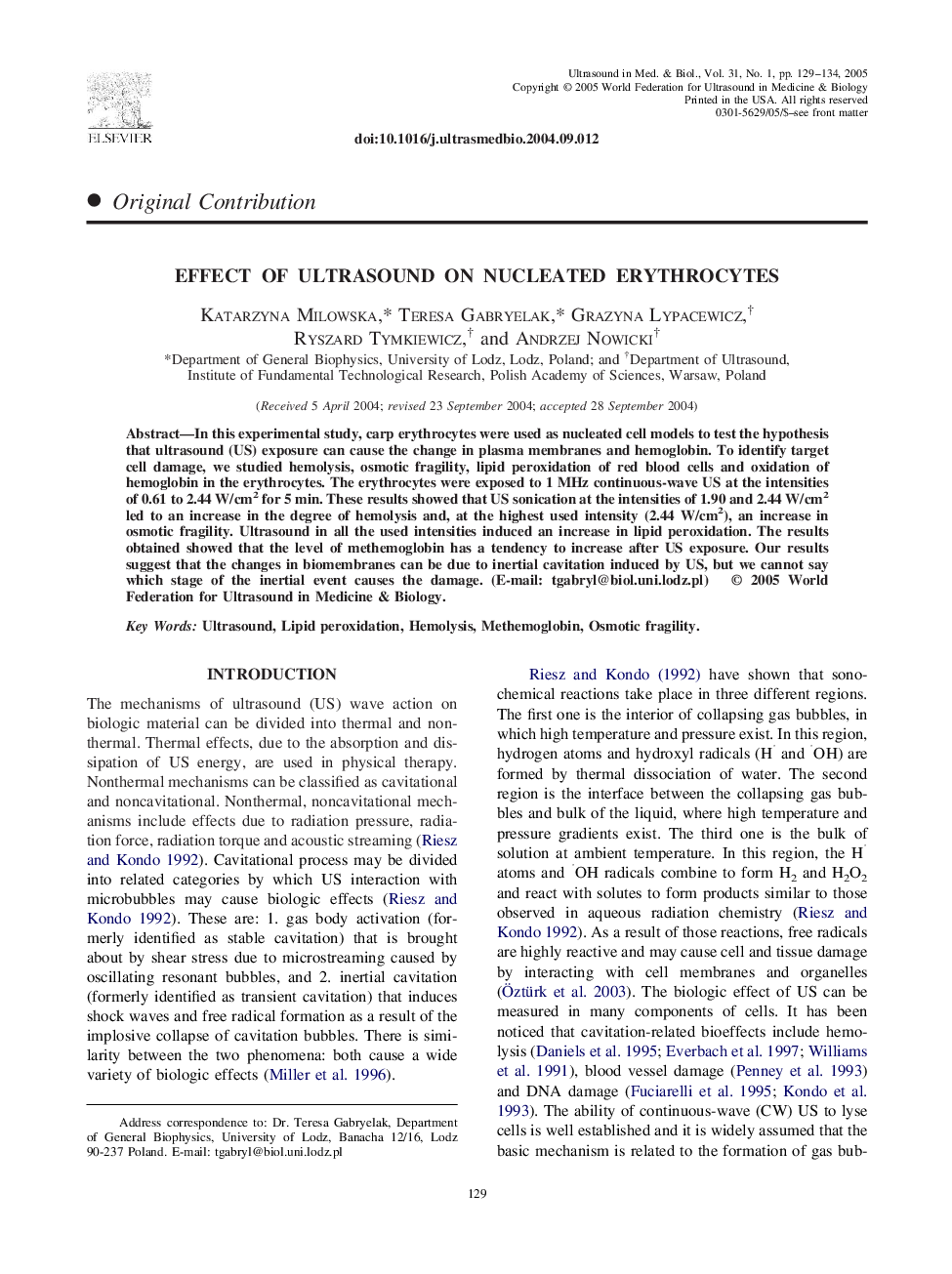| Article ID | Journal | Published Year | Pages | File Type |
|---|---|---|---|---|
| 10692277 | Ultrasound in Medicine & Biology | 2005 | 6 Pages |
Abstract
In this experimental study, carp erythrocytes were used as nucleated cell models to test the hypothesis that ultrasound (US) exposure can cause the change in plasma membranes and hemoglobin. To identify target cell damage, we studied hemolysis, osmotic fragility, lipid peroxidation of red blood cells and oxidation of hemoglobin in the erythrocytes. The erythrocytes were exposed to 1 MHz continuous-wave US at the intensities of 0.61 to 2.44 W/cm2 for 5 min. These results showed that US sonication at the intensities of 1.90 and 2.44 W/cm2 led to an increase in the degree of hemolysis and, at the highest used intensity (2.44 W/cm2), an increase in osmotic fragility. Ultrasound in all the used intensities induced an increase in lipid peroxidation. The results obtained showed that the level of methemoglobin has a tendency to increase after US exposure. Our results suggest that the changes in biomembranes can be due to inertial cavitation induced by US, but we cannot say which stage of the inertial event causes the damage. (E-mail: tgabryl@biol.uni.lodz.pl)
Related Topics
Physical Sciences and Engineering
Physics and Astronomy
Acoustics and Ultrasonics
Authors
Katarzyna Milowska, Teresa Gabryelak, Grazyna Lypacewicz, Ryszard Tymkiewicz, Andrzej Nowicki,
